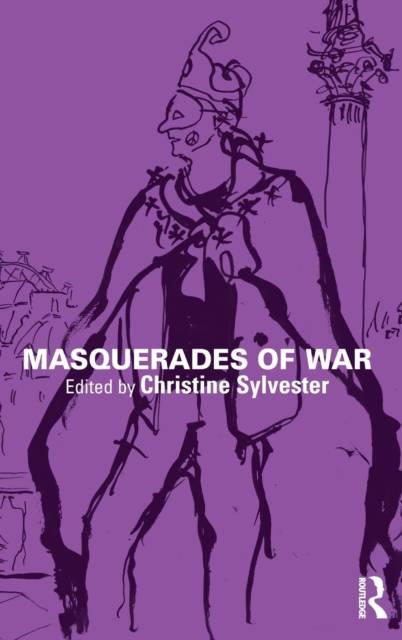
- Retrait gratuit dans votre magasin Club
- 7.000.000 titres dans notre catalogue
- Payer en toute sécurité
- Toujours un magasin près de chez vous
- Retrait gratuit dans votre magasin Club
- 7.000.000 titres dans notre catalogue
- Payer en toute sécurité
- Toujours un magasin près de chez vous
Description
This collection explores the concepts and practices of masquerade as they apply to concepts and practices of war.
The contributors insist that masquerades are everyday aspects of the politics, praxis, and experiences of war, while also discovering that finding masquerades and tracing how they work with war is hardly simple. With a range of theories, innovative methodologies, and contextual binoculars, masquerade emerges as a layered and complex phenomenon. It can appear as state deception, lie, or camouflage, as in the population-centric American warfare in Iraq that was sold as good for the local people, or the hidden violence Russian military forces used on each other and on local men in Chechnya. Masquerade can also be part of a people's war logic as exemplified by the Maoist movement in India. Yet masquerade can also be understood as a normal social mask that people don to foreground an identity or belief from one's cluttered repertoire in order to gain agency. Elements of masquerade can appear in texts that proclaim seemingly unequivocal positions while simultaneously yet subtly suggesting opposing positions. Masquerades of all kinds also seem ubiquitous in fieldwork research and in resistance movements in war zones. Perhaps masquerade, though, is ultimately the denial of death lurking behind the clarion call of security, a call that bolsters war by making militarized policing normal to secure populations from terrorists. These interpretations and others comprise Masquerades of War.
This book will be of much interest to students of critical war studies, critical security, conflict studies and IR in general.
Spécifications
Parties prenantes
- Editeur:
Contenu
- Nombre de pages :
- 230
- Langue:
- Anglais
- Collection :
Caractéristiques
- EAN:
- 9781138810693
- Date de parution :
- 28-05-15
- Format:
- Livre relié
- Format numérique:
- Genaaid
- Dimensions :
- 156 mm x 234 mm
- Poids :
- 526 g






